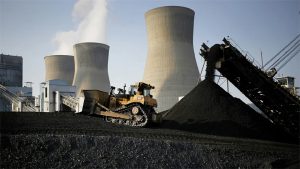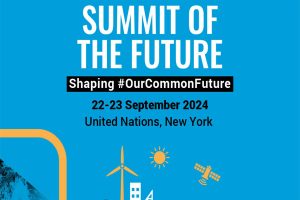Engineers are exploring radical new designs for commercial planes that would use less energy and lower emissions. But will passengers be willing to board them?

Doug Cameron, WSJ
CHICAGO
EnergiesNet.com 11 03 2022
Modern airliner designs date from the 1950s: a metal tube and swept-back wings with jet engines slung underneath. They get you where you’re going and back. But after decades of research, something very different could be flying you on vacation by the late 2030s.
Unconventional designs such as “blended-wing” shapes now used for some military jets, which combine the cabin and wings in one piece, have been floated for years as possibilities for passenger aircraft. Now the rise of climate-change concerns and emergence of new manufacturing materials have brought a rethink a step closer to reality, scientists at the National Aeronautics and Space Administration say.
Just about every fuel-saving aerodynamic efficiency has been wrung out of existing aircraft. The next generation will need bolder designs to meet new environmental standards and airline economics, and that’s forcing plane makers back to the drawing board.
The designs now exist mainly as artists’ renderings, models and small-scale prototypes. That could be set to finally change. NASA in June launched a competition for U.S. companies to design and build a full-scale demonstrator. The rules require entrants to target planes around the size of a Boeing Co. 737 that can carry 150 passengers. The agency wants a prototype that could fly as early as 2027 and be ready for mass production in the next decade.
The agency won’t comment on the proposals submitted by the September deadline, but points to the recent history of alternative designs by researchers and aircraft makers. These include plane bodies that look like flying wings with passengers seated 10 or more across, compared with rows of six on a Boeing 737. Others have long, thin wings that would have to fold to fit into airport gates. In some designs, jets under the wing are replaced by rear-facing propellers mounted on the back of the plane.

NASA held a similar competition 10 years ago that focused more on the efficiency of the designs than the ability to make them commercially feasible. Now, it is focused on aircraft that are more efficient and can enter the fleet to make a difference to aviation industry emissions. “We’ve been working on advanced configurations for 20 years, but last time I went to the airport I didn’t see any of them flying around,” says Brent Cobleigh, NASA’s Flight Demonstrations and Capabilities Project Manager.
Aircraft designers have coalesced around three main designs, which people involved in the latest contest said are expected to feature prominently in the entries. They carry exotic names—such as transonic truss-braced wings, blended-wing bodies and double bubbles—that reflect how far removed they are from most of the conventional planes that now carry commercial passengers worldwide.
NASA earmarked only around $1 billion of its $26 billion fiscal 2023 budget request for aircraft-related activities, in line with past years, but officials say its work has influenced every part of planes now flying. The agency plans to additionally dip into its space budget to fund part of the construction and testing of the winning design, which it plans to announce in January. New airplanes developed this century by Airbus SE and Boeing have required investments of $10 billion or more, so any future aircraft will require significant external funding.
Such designs promise improved fuel efficiency and lower emissions, mainly from reducing aerodynamic drag, says Prof. R. John Hansman, head of the International Center for Air Transportation at the Massachusetts Institute of Technology.
The blended-wing models and double bubbles—which combine two almost round fuselages—use the main body of the plane to provide lift, rather than relying mainly on the wings, Prof. Hansman says. They also don’t need drag-inducing tailplanes.

Transonic truss-braced wing models use a conventional passenger tube, which is aerodynamically efficient and an easy shape to pressurize so passengers can breathe oxygen at altitude. They incorporate long, thin wings that have less drag in flight than conventional ones, but are more delicate and need support struts to reduce the stress where they join the body.
While Boeing and rival Airbus have worked on radical designs for years, airlines have preferred the cheaper option of incremental improvements to conventional planes. Aircraft makers have been reluctant to move first, given the huge investment required for all-new designs.
Big aircraft buyers, like the broader industry, support the aims of reducing its climate footprint. But they question the economics of new designs. “Will the world beat a path to its door?” says John Plueger, chief executive of Air Lease Corp., one of the world’s largest jetliner-rental companies.
“If we don’t do this there will never be change,” says Rich Wahls, NASA’s mission integration manager for its Sustainable Flight National Partnership program, which includes the plane-design contest. “We have to get this into the fleet quickly to make a climate impact.”
Entrants to the NASA competition had to demonstrate their designs can be mass-produced at 60 planes a month, Mr. Wahls says. The contest is being run in parallel with the industry’s efforts to develop new power systems, including alternatives to jet fuel such as hydrogen and electricity, as well as composite materials and new manufacturing systems.

“I believe in 20 years we’ll see something that looks different,” he says.
NASA says one of its aims is to create a “national champion” to give the aircraft-manufacturing export sector—the U.S.’s largest—a first-mover advantage. European countries, notably France, Germany and the U.K., as well as China, Japan and South Korea are also eyeing the big leap into an all-new plane design.
The agency says it will be a true contest, despite Boeing’s dominance of the U.S. market in producing large commercial aircraft. The company is already working with NASA on a truss-braced wing design.
Boeing says it has been researching the concept for more than a decade, and sees significant potential benefits in fuel consumption and emissions. “Because we are in an active competition, we cannot comment further at this time,” the company said.
In the competition to build a new kind of jetliner, Mr. Wahls says he doesn’t expect to see anything like the 300-plus companies vying to create air taxis, but finds no shortage of nontraditional players. “There’s a lot of rich people out there. You get the right one…,” he says.
But a new jetliner design will likely face one of the same challenges seen in the nascent air-taxi business: convincing people to fly on something unfamiliar. NASA says passenger acceptability is one of the criteria built into its contest.
Earlier studies of flying-wing designs found that being on the outside seats was no bumpier than flying in the back seat of a Boeing 747, Mr. Wahls says. Some studies also have shown that such designs could be evacuated as quickly as a conventional design, he says.
As leaders of the contest, Mr. Wahls and Mr. Cobleigh won’t discuss what kind of aircraft they expect to see at airports in the late 2030s. In a video interview for this story neither had any visible photographs, renderings or models in the background—not so much as a child’s drawing. “I’m afraid to show any configuration as it looks like I’m favoring one,” says Mr. Cobleigh, whose presentations right now feature nature photos rather than planes.
wsj.com 11 03 2022









